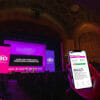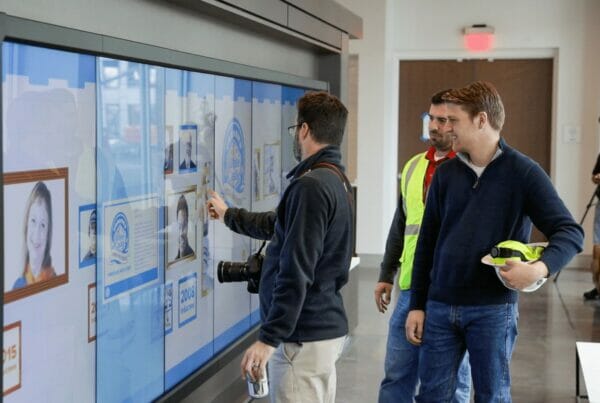Digital signage can make a big difference in the quality of a patient’s experience in a healthcare facility. Digital signage for hospitals or other healthcare settings can provide real-time information, aid in digital wayfinding, entertain patients, aid in staff communication, and much more. But for the best impact, healthcare organizations like yours need to implement digital signage in strategic and effective ways.
Below, we’ll show you six strong use cases for digital signage solutions in healthcare, with tips and best practices sprinkled throughout.
6 Healthcare Digital Signage Examples
Waiting Rooms
Healthcare environments create plenty of natural uncertainty for patients and families. Most people haven’t been to a doctor’s office or hospital for exactly the same problem more than once, so in many disciplines and scenarios there’s a good chance that it’s everyone’s first time in that particular place for that particular type of care.
First-timers tend to have similar, predictable questions such as wait times. You can surface answers to those questions on digital signs in the waiting room. You can also use this space to point out anything that’s out of the ordinary or specific to your discipline or area. This is also a great place to clarify masking policies.
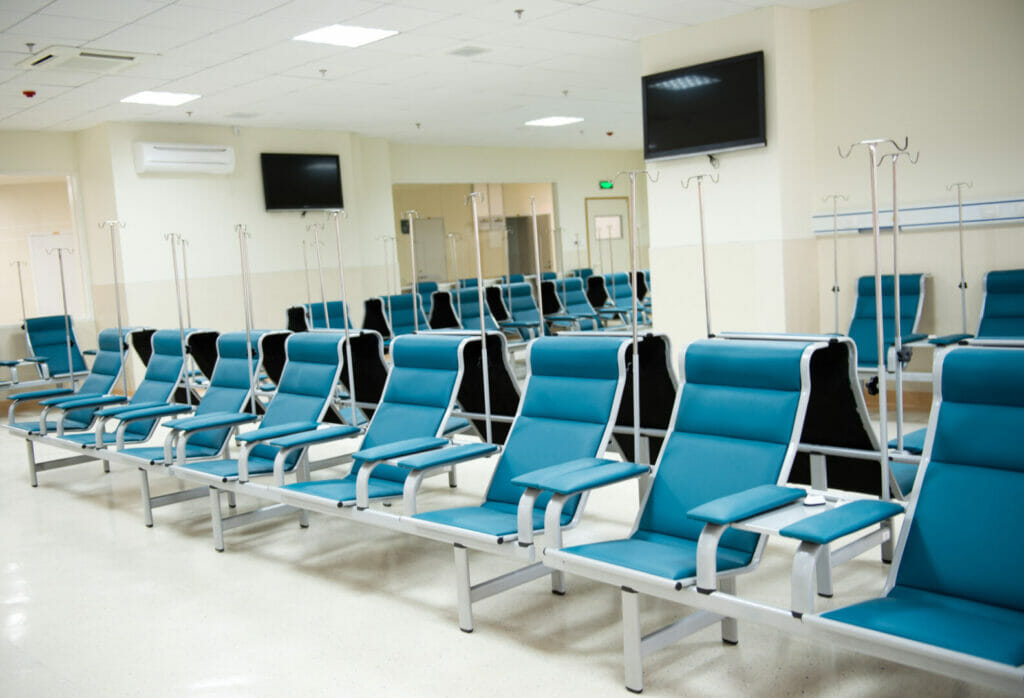
Interactive Map Kiosks
The larger your healthcare facility, the more challenging navigation becomes for patients, families, and visitors. Hospitals can benefit from installing large-format interactive kiosks that can be used for navigation and wayfinding. A digital directory or map can show orienting information such as where the kiosk is and can surface various locations throughout the hospital with a simple search. Digital screens can also zoom in and out in a way that paper maps can’t replicate.
One word of warning: make sure that if you go this route you choose firmware and digital signage software with high stability and reliability. People don’t generally enjoy being at a hospital. Tapping repeatedly on an unresponsive kiosk doesn’t improve the visitor experience.
Check-in Stations
Smaller healthcare facilities like pediatric offices, or even pharmacies are leveraging touchscreens (often iPads on pedestals) as check-in stations, reducing crowding at the front desk and reducing the amount of pen and paperwork that patients and parents must complete at the start of an office visit.
Using a digital method for check-in reduces transcription errors, lessens the possibility of dropping or setting aside a patient’s information, and generally improves the flow of traffic through the waiting area. It’s a low-cost, relatively small investment solution that creates numerous positive outcomes. We also see check-in data being shared via digital signage throughout these facilities so that patrons can view for instance where they are in the queue.
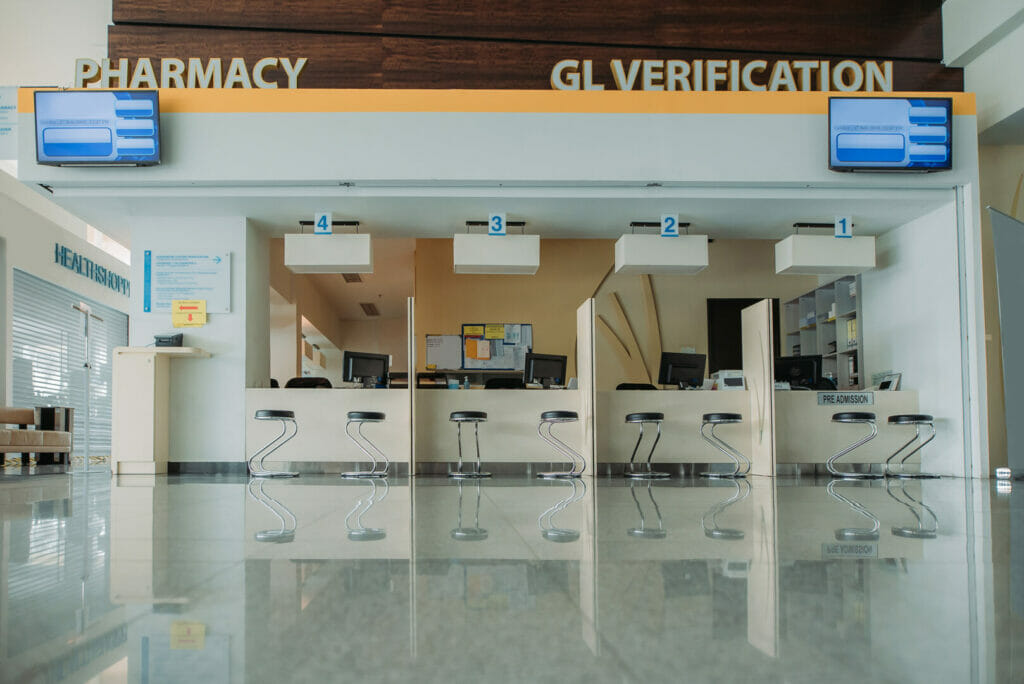
Digital Menus
In healthcare facilities that have their own dining facilities (hospitals, mainly), digital signage can perform one of its more traditional roles: as digital menu boards.
More often than at most restaurants, hospital cafeteria menus change. Items run out or change daily, and printed menus can become very hard to follow. Using a digital menu board system allows your dining team to update menus in one place and have them displayed properly everywhere that you have a board. You can also provide dietary or nutritional information to help people learn more about the food options.
Entertainment
Digital displays or projectors as entertainment can be a great way to ease the anxieties associated with being at a doctor’s office or hospital and improve the patient experience. Interactive displays such as StoryWall can provide a needed distraction from the fears of the moment, cheering up patients and families alike.
Bluewater has installed entertainment or distraction-based digital displays for a number of healthcare systems. Our touchless Active Play systems have engaging content and are a great way to get kids up and playing, not sitting and fretting, without fear over surface transmission.
For more, you can also read about our work at the Children’s Hospital of Michigan.
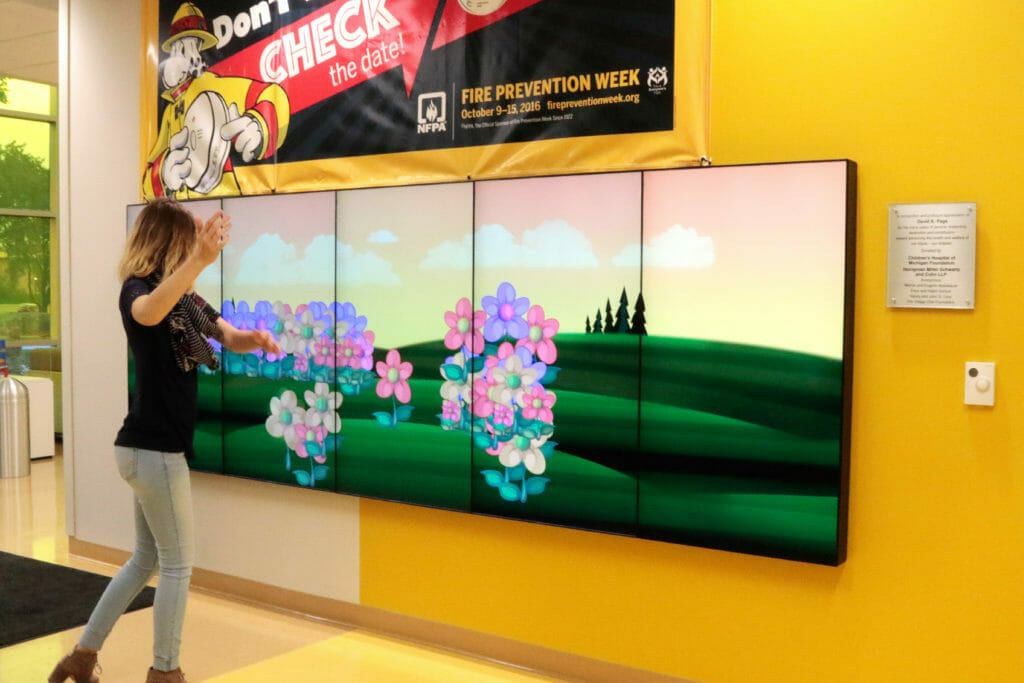
Staff Communication
In larger healthcare settings, it can be challenging to quickly notify your staff of an urgent change or need. Many healthcare providers are busy doing important, even life-saving work, and they aren’t going to check their emaill for new notifications constantly while doing so.
By installing digital displays in strategic locations on hospital floors, break rooms, and other care settings, you can centrally push out crucial internal communications that get seen as quickly as possible.
The Best Digital Signage Implementation Requires the Right Partner
Getting all of the benefits of digital signage requires the right implementation strategy. And to get the right strategy in place, you need the right AV partner.
Bluewater has been serving clients in healthcare industries for years, and we know what it takes to do healthcare AV implementations right. We’re also experts in experiential AV, which means we can make sure your digital signage implementations make exactly the right impact.
Reach out today to learn what Bluewater can do for you.





